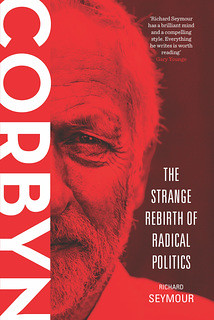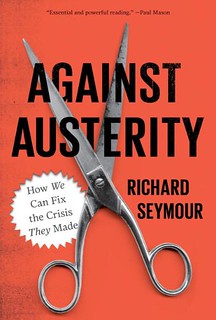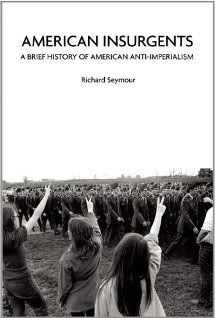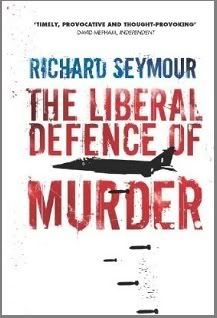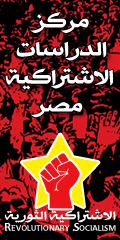Tuesday, June 19, 2007
Defiling Cities. posted by Richard Seymour

"When we identify positively an enemy target, we're going to go ahead and take it out with every means we have available. I like to remember what Viscount Slim said during the Burma campaign. He said, 'Use a sledgehammer to crush a walnut.' And that's exactly what we will do. We will use force, overwhelming combat power when it's necessary." – US Major General Charles H. Swannack Jr.
Baqubah has, for nine months now, been a hotbed of resistance to the occupation. Conventionally and conveniently described by US military sources as an 'Al Qaeda' enclave (by practically every news organisation, probably repeating MNF press releases), Baquba is in fact a mixed town with Kurds, Shi'ites and Sunnis, where Mahdi Army fighters have battled US soldiers in the past. It was one of the first cities to break into open rebellion against the occupiers, after the magificent example of Fallujah, which drove them out of the city in April 2004 to massive cheering from gathered crowds. However, that example should immediately produce a pause: after all, look at what they did to that city of mosques. To a much lesser extent, similar fates have befallen other cities and towns that rebelled. Tal Afar, al-Qaim, Haditha, Samarra, and Ramadi, for instance. Huge areas of Najaf were destroyed. Parts of Baghdad have been turned into a patchwork of concrete, dust and broken furniture. Hospitals have been bombed, deliberately, as have ambulances. People fleeing in the streets have been ruthlessly gunned down. And Baquba has not been spared: the US has perpetrated repeated massacres there.
About a week ago, they fired on a mosque in the city. Currently, an offensive is under way against the city. 10,000 US troops are involved, with 30,000 more to come, and a wave of air strikes was perpetrated over night. The troops, confined in Bradley tanks and Strykers, have entered the city en masse. Little else is being explained, although we are given a glimpse of pillars of black smoke, at the end of which lie incinerated buildings and cavities of scorched earth. It will be a while before anyone starts to hear many details of what has happened to that city.

A new study by over thirty NGOs, including some excellent groups like the Transnational Institute, contains a lengthy section on attacks on cities by the occupiers. It outlines some rules of thumb for destroying a city:
1) encircle and close off the city, as in Falluah and Tal Afar, where they built an eight-foot high wall around the entire city before pulverising it: "Coalition troops seize control of all movement into and out of the cities, including goods and supplies, water, food, medicines and emergency assistance of all kinds. This “sealing off” strategy seeks to isolate insurgents and show ordinary civilians the heavy cost of not cooperating. Lieutenant Colonel Nathan Sassaman described the approach quite bluntly in the early months of the occupation: “With a heavy dose of fear and violence, and a lot of money for projects, I think we can convince these people that we are here to help them.” Coalition forces subject residents to intensive screening at check points, where they are required to present special identification cards.6 At the checkpoints, troops arrest and detain some Iraqis (often arbitrarily), while routinely denying access to others on grounds that their documents are not in order. “We are like birds in a cage,” said a resident of Abu Hishma to the New York Times, complaining of the humiliation endured";
2) forcefully evacuate those who remain: "In Falluja, a city of about 300,000, over 216,000 displaced persons had to seek shelter in overcrowded camps during the winter months, inadequately supplied with food, water, and medical care.16 An estimated 100,000 fled al-Qaim, a city of 150,000, according to the Iraqi Red Crescent Society (IRCS). In Ramadi, about 70 percent of the city’s 400,000 people left in advance of the US onslaught.18 These moments mark the beginning of Iraq’s massive displacement crisis.";
3) cut off food, water and electricity: "The Coalition has repeatedly denied water to residents of cities under siege, including Falluja, Tal Afar and Samarra, affecting up to 750,000 civilians. Many families have only limited emergency water storage and cannot survive long once the central supply has been cut. Along with water, the Coalition has cut off electricity (which may power pumps and local wells). They also have cut off food and medical supplies, creating a “state of siege” and imposing a humanitarian crisis on the entire remaining urban population. In September 2004, the US “turned off” water supplies to Tal Afar “for at least three days,” according to the Washington Post. In October 2004, the Independent reported that 'US-led forces cut off power and water” in Samarra. And in November 2004, the UN reported a similar cut-off of vital necessities in Falluja, “directly affecting civilians (approximately 50,000 people then remaining inside [the city]) for whom water is a basic need and a fundamental human right.'";
4) confine reporters and block media coverage: "Preceding US military operations in Najaf in August 2004, Iraqi police encircled a hotel where journalists were staying, ordering them to leave the city and threatening to arrest all those who did not comply with the order. While claiming that the ban was based on concerns for the safety of the journalists, police officers said they would confiscate all cell phones and cameras. In Falluja, the US military banned all non-embedded journalists from the city. Reports have mentioned that journalists and camera crews were arrested and their equipment confiscated, without explanation, before being released later without charges";
5) massive bombardment: "The Washington Post reported that in Falluja, an “official, who spoke on condition of anonymity, described 12 hours of overnight strikes by American helicopters, fighter-bombers, field artillery and tanks as ‘shaping operations.’ Military commanders use the term as shorthand for battlefield preparation, combat operations specifically intended to remove enemy strong points in advance of an assault.” In the second assault on Falluja, the air strikes began on October 15, the first day of the Muslim holy month of Ramadan, and continued for three weeks prior to the assault of November 7. In Najaf, US Marines bombarded the cemetery near the famous Imam Ali Shrine as well as much of the city center, in a massive attack backed by aircraft and tanks. In Ramadi, US forces carried out intensive bombardment, targeting the city’s power stations, water treatment facilities, and water pipes, leaving many destroyed houses and no civilian services functioning";
6) conduct a massive urban assault, using sniper fire, and put survivors through violent searches: "The US military has increasingly relied on snipers to back-up infantry patrols. Commanders portray snipers as a precision method to avoid civilian casualties, but in fact sniper teams often fire at anyone moving in the streets, in gardens or even inside of buildings. Everyone is treated in the besieged cities as an enemy. Using night goggles and special high-power scopes, snipers shoot at any moving object, which might be a civilian going out in desperate search for food or water, seeking medical care, escaping a collapsing building, or trying to leave the city. During the siege of Falluja in April 2004, the Guardian reported that US snipers shot an ambulance, an elderly woman carrying a white flag, and an aid worker delivering medical supplies on foot. The UN reported that, in August 2006, snipers in Ramadi shot thirteen civilians who had breached the curfew, killing six and injuring seven in just one district of the city."
7) attack hospitals, ambulances and other medical facilities: "Coalition troops have targeted medical facilities during urban offensives, and repeatedly destroyed and confiscated ambulances, making emergency care nearly impossible. In Falluja, US troops “destroyed a civilian hospital in a massive air raid, captured the main hospital and prohibited the use of ambulances.” Medical personnel were arrested and the patients removed. Similarly, as the US prepared to launch a major assault on Najaf, Al-Hakeem Hospital was “taken over as a coalition military base, off limits to civilians.” In the summer of 2006, during an offensive against Ramadi, Coalition forces captured the city’s General Hospital, endangering the sick and rendering health care impossible. According to the UN, troops seized the city’s Specialized Hospital on July 5 and held it more than a week until July 13, after which time they withdrew but set up a patrol outside. Further UN reports have spoken of Coalition snipers stationed on the roof of the Ramadi General Hospital, troops quartered in the hospital garden, and fearful residents avoiding the hospital altogether. In Tal Afar, the UN reported that the city hospital had been “occupied” by Coalition forces for six months."

Obviously, you have to expect massive civilians casualties and plenty of atrocities along the way - cos that's how it was planned, and destruction of the infrastructure. However, be sure that when you conduct "joint" operations with the security forces you've built, trained and indoctrinated, that the puppet government doesn't start complaining. I do recommend you read the full report, as it's an exceptional effort, relying for the most part on impeccably mainstream, respectable sources. It has excellent summaries of all the issues, from illegal detention to embezzlement, bases, atrocities and Iraqi public opinion. I selected the segment detailing attacks on cities in part because these are set-pieces of the occupation, the obect-lessons in terror that the occupiers have established throughout their prolonged and bloody efforts to take control of the country, with very clear patterns obtaining, but also in part because there is a related chapter in Derek Gregory's The Colonial Present entitled 'Defiled Cities'.
The 20th Century had not been short of defiled cities and towns. Guernica, Dresden, and Hiroshima stand out as obvious candidates. In the 21st Century, a new ground zero was created in New York City, the first massive attack on an American city by non-Americans in the history of the United States, using purloined technology. Since that crime was immediately sufficient to provide invisibility to others, a massive Israeli operation was undertaken: tanks were driven into Jericho, Jenin and Ramallah with back-up from helicopter gunships. Olive trees were uprooted, houses were bulldozed, civilians cut down in the streets (Israel, too, has its modus operandi when it comes to attacking cities). It caused the United States government some PR issues while they were busily taking Afghanistan to pieces, and so they started to uncharacteristically and frankly criticise the Israeli actions - but that was quickly brushed aside when the Taliban collapsed and the Northern Alliance helped a BBC reporter to 'liberate' Kabul. The Palestinians reacted with a fresh wave of suicide attacks, which killed a few dozen civilians but had little impact on Israel's military capacity. Instead, it permitted Israel to undertake its carefully planned Operation Defensive Shield, according to Sharon "a long and calculated war that knows no borders". Aside from destroying buildings and infrastructure, aside from killing civilians, Gregory notes that Israeli troops rampaged through PA offices to "destroy the record - the very archive, the institutional memory - of Palestinian civil society". City after city was invaded, and building after building was levelled with gunship fire and tankshells. And then the bulldozers moved in. Nablus, Hebron, the Jenin refugee camp reduced to Carthaginian ruins (the Romans, they say, salted the earth so that nothing would ever grow again - Israel simply uproots the olive groves and destroys the supporting life forms). In considerable depth, and with detailed images, Gregory outlines the cartography of terror that Israel set about imposing on the West Bank and Gaza.

We are, if the repeated signals via the news media are serious, about to see what new forms of depravity Israel can inflict on the cities of the tiny Gaza strip. Baquba is already being perforated and burned and razed. Next month it will be a new set of cities transformed into moonscapes. Israel may find itself back in downtown Beirut. Iranian cities may soon cop it from missiles - with nuclear heads, no less (and neither Republican nor Democrat will take such an option 'off the table'). Over thirty years of imperialist terror has left Afghanistan in ruins. To the Planet of Slums is being added dozens of mass graves and hollowed out bomb sites. Only the surreally calm Green Zones of the world are safe: but for how long?
Labels: colonialism, iraq, iraqi resistance, US imperialism


